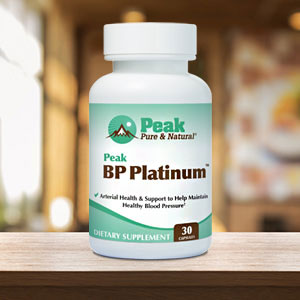Get Easy Health Digest™ in your inbox and don’t miss a thing when you subscribe today. Plus, get the free bonus report, Mother Nature’s Tips, Tricks and Remedies for Cholesterol, Blood Pressure & Blood Sugar as my way of saying welcome to the community!
Why glaucoma may be the sneakiest sight stealer

You probably get a yearly checkup at your doctor’s office. But when was the last time you had your eyes examined?
As we age, several conditions can degrade our eyesight.
Glaucoma is one of these conditions.
Right now, there are more than three million Americans, aged 40 and older, affected by glaucoma. It subjects your optic nerve to damage that, if left untreated, can blind you.
And new research has found you could be suffering that damage right now — without any obvious telltale signs until it’s too late…
Study confirms that glaucoma is sneaky
In a Swedish study, about 1,200 70-year-olds answered written questions about their eye health and the presence of glaucoma in their family. Eye specialists at Sahlgrenska University Hospital also examined 560 of the participants.
Of those 560, 4.8 percent were diagnosed with glaucoma. But here’s the scary part…
Fifteen of those people (2.7 percent) were unaware that they had the disease before being examined for this study.
That means that about half the people who turned out to have glaucoma were only diagnosed because they took part in the study.
Fortunately, they could start treatment with daily eye drops that lower the pressure in the eye and slow down the damage to the optic nerve.
This research confirmed several important things about glaucoma:
- Glaucoma is affected by heredity. Those diagnosed with glaucoma in the study were more likely to have a close relative who also was diagnosed with the disease.
- While glaucoma involves abnormal eye pressure, this often does not show itself until later stages of the disease (67% of those newly diagnosed in the study still had normal eye pressure).
Perhaps most importantly, the study confirmed that glaucoma in its early stages often does not involve loss of visual acuity and that could leave lots of people in the dark about the future of their eyesight.
Glaucoma risk factors and basics
As glaucoma progresses, it can lead to permanent vision loss.
Many, but not all, forms of glaucoma raise your intraocular pressure (IOP).
Risk factors for glaucoma include:
- Age
- Hypertension and diabetes
- Extreme nearsightedness (myopia) or far-sightedness (hyperopia)
- Family history of the disease
- Genetics
- Long-term use of corticosteroids
- Previous eye injury or surgery
There are five types of glaucoma, but the most common are:
Primary Open-angle glaucoma (POAG) is the most common form. It affects almost three million Americans.
In open-angle glaucoma, your IOP rises because the fluid in your eye cannot drain properly.
The entrances to your drainage canals are clear and open, but problems occur further inside the drainage system. Think of this problem as a clogged pipe that causes gradual fluid buildup. Over time, this can lead to irreversible vision loss.
Studies have shown evidence supporting a theory that reactive oxygen species (ROS) is involved in the pathogenesis of POAG — as well as a significant correlation between oxidative DNA damage and IOP in glaucoma patients.
A study published in the International Journal of Opthalmology in 2022 suggests that drinking green tea or its extracts in moderate doses might have beneficial effects, especially for people with high IOP, or for those who have risk factors for glaucoma development.
Long-term hypertension and glaucoma often go hand in hand, and green tea has also shown helpful for lowering both systolic and diastolic blood pressure.
However, low blood pressure can also pose a problem, decreasing blood flow to the optic nerve.
Angle-closure glaucoma is less common. It occurs when the drainage canals are completely or partially blocked, similar to a covered drain.
A completely blocked-off drainage angle is called acute angle-closure glaucoma. This form of the disease is a medical emergency and can cause rapid vision loss if left untreated.
Regular eye exams could be sight-saving
In case you haven’t picked up on this fact already, glaucoma is sneaky.
That’s why, especially if you have any of the risk factors mentioned above, you need to have regular eye exams with an optometrist — or preferably an ophthalmologist if you are at high risk.
These should be at least annual visits or more as recommended by your eye doctor.
Editor’s note: There are perfectly safe and natural ways to decrease your risk of blood clots including the 25-cent vitamin, the nutrient that acts as a natural blood thinner and the powerful herb that helps clear plaque. To discover these and other secrets of long-lived hearts, click here for Hushed Up Natural Heart Cures and Common Misconceptions of Popular Heart Treatments!
Sources:
Older people may have glaucoma without realizing it — Eureka Alert
The prevalence of glaucoma in a 70-year-old Swedish population in the city area of Gothenburg —Acta Ophthalmologica
5 Early Signs of Glaucoma — Family Focus Eyecare














